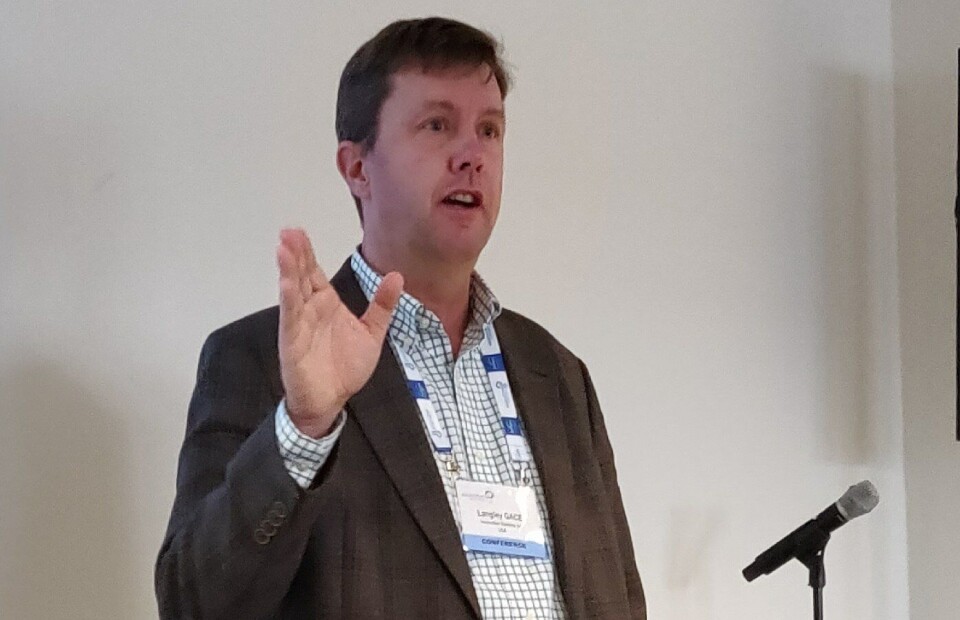
The ups and downs of submersible cages
Submersible cages may still be in their early stages in salmon farming, but United States company Innovasea has been making them for other fish for 20 years.
And while such cages make a lot of sense for use in open ocean areas with no shelter, they come with their own challenges, Innovasea senior vice president business development Langley Gace told an audience at the European Aquaculture 2019 event in Berlin earlier this month.
Delivering feed to fish who are tens of metres below the surface is one of several areas where the company has had to put extra effort in.

Water-borne feed
“We use a water slurry to deliver the feed,” said Gace, explaining that Innovasea had worked with feed companies to get the best formulation.
“You cannot use a hard shell (on the feed) and expect the fish to get all the nutrients.”
Distribution also requires extra effort. Innovasea has developed “the equivalent of a soaker hose” to get the feed to all of the fish in a cage. “We’re still working on it,” said Gace.
Cage cameras
The choice of cage cameras is another area where the company, which has added aquaculture tech companies to its portfolio, has gone its own way.
“There are two types, those that will last forever and cost a fortune, and those that will break immediately,” said the executive, who added that Innovasea had designed a camera that is “just good enough and inexpensive enough to have five or six in each pen”.
Having more cameras helps overcome problems caused by turbidity, said Gace, who explained that the company had been looking at fish behaviour to work out when their appetite was sated.
A tracer vector has been added to pellet recognition software to see whether pellets are falling or floating.
A lot of sharks
Innovasea is also trying to do away with as many electrical cables as it can and has some sensor equipment that can broadcast for a year on a standard battery.
Mortalities can pose a problem in submersible pens if they are used in warm waters.
“We have a lot of sharks, and you need to keep a clean pen,” said Gace.
The company is working on a mort trap because morts become buoyant quicker in warmer weather.
Surviving the storms
Those challenges, though, must be weighed against the advantage of having a pen that can hide from storms.
“Submersible grids survive much longer,” Gace said in his presentation at Berlin’s Estrel Congress Center.
Four of the company’s Sea Station cages have been used to grow tuna in Jeju, South Korea, for the last two years, and have survived typhoons. And a research pen in the Bahamas is still in place after Hurricane Dorian, the most intense tropical cyclone to strike the islands, brought winds of up to 295 km/h.
Salmon cage
Innovasea introduced a new submersible salmon cage concept, the Evolution or “Evo” pen, at Aqua Nor in Trondheim in August. Unlike Innovasea’s Sea Station cages, which are built around a vertical spar which is filled or emptied with water to lower or raise it, the Evo uses modular blocks that link together to make the collar and working platform. This allows the cage to descend evenly, something which is harder to achieve using a collar where water fills one side first, tilting the cage.
The problem of how salmonids can get access to air to fill their swim bladders is still being worked on, although Gace said the company hopes to run a trial with trout off New Hampshire. The fish would be left under water for two weeks, then brought up for about 40 minutes at night, when there are believed to be fewer sea lice.























































